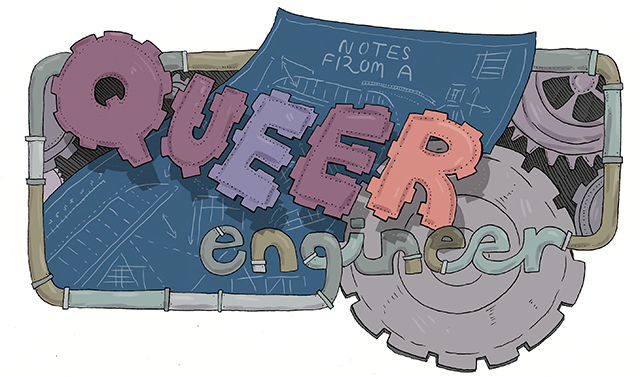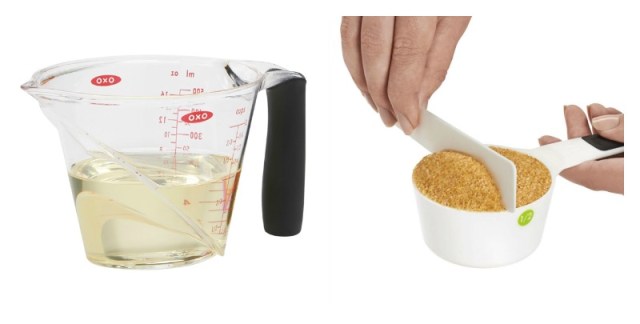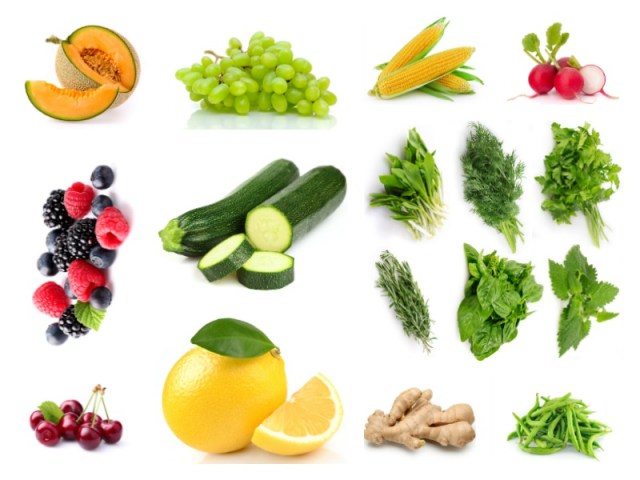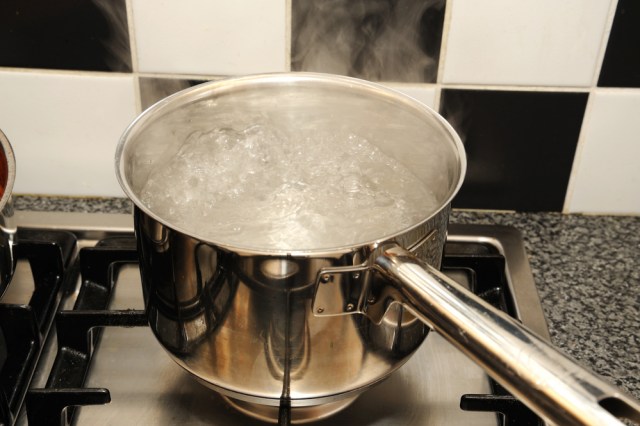 Header by Rory Midhani
Header by Rory Midhani
Feature image by Shutterstock
I woke up this morning to the sound of scraping. With my eyes closed, it sounded like an army of children going to town with shovels in a giant sandbox. When I looked out the window, of course, that wasn’t what was happening. Officially, it’s spring, but outside, a fluffy blanket of snow covers the sidewalk, grass, and early crocuses.
To avoid the depressing sight of frozen flowers, my girlfriend and I spent the day indoors, playing Legend of Zelda: Twilight Princess and making pulled pork taco meat in the crock pot. I love cooking with her — but as we’re both learning, working for four and a half years at a kitchen gadget company has left me with some strong opinions about proper cooking prep. (Thank goodness she’s patient.)
At my last job, I was the main person in charge of compliance and product testing, helping engineers work through a variety of quality-related issues. I learned a lot of interesting things about materials science. I also got to spend lots of time around people who are really, really into cooking and kitchen gadgetry. Here are five tips I picked up.
1. Don’t measure wet ingredients using dry measuring cups (or vice versa)

Left: Wet measuring cup. Right: Dry measuring cup. Images via OXO.com.
The most accurate way to measure dry ingredients is by weight. But if you’re too lazy or indifferent to break out the kitchen scale (I usually am!), you should at least use the right tools for the job. Volumetric accuracy is extremely difficult to achieve otherwise. Serious Eats explains:
Wet ingredients, such as milk, water, eggs (if you’re measuring eggs by volume) or oils can technically be measured in both wet or dry measures—one dry measuring cup of milk should weigh exactly the same as one wet measuring cup of milk. However, a dry measuring cup must be filled to the brim for accuracy, which can make measuring liquids in them impractical. Likewise, dry ingredients can be measured in a liquid measure, but it is very difficult to accurately level dry ingredients without a straight brim to aid you.
2. Rotate your knife along X, Y and Z planes for maximum onion chopping efficiency
This method can be a little intimidating the first few times you do it, but it’s super satisfying once you get the hang of it. It’s also the method taught at the Institute of Culinary Education, New York City’s oldest chef training school.
3. Pay attention to how you’re storing produce to keep it fresher longer
Scientifically, there are three main factors that cause produce to rot:
- ethylene gas which causes overripening,
- improper airflow which allows moisture to build up,
- and uncontrolled humidity which causes wilting.
There are a variety of consumer products you can buy to address these issues, either individually or in combination. My approach has generally been to make smaller, more frequent trips to the grocery, so that I don’t have to think about it. But when I do need to hold onto something for a while, this guide at The Kitchn has pretty good advice on the best ways to store food!

Left: cantaloupe, grapes, zucchini, lemons, berries and cherries are happier with less humidity. Right: herbs, ginger, green beans, radishes and corn are happier with more humidity. Images via Shutterstock.
4. Always cover pots when you’re trying to boil liquid
It’s quicker. America’s Test Kitchen explains:
In theory, water in a covered pot should boil faster because as water changes to steam, it absorbs energy, which it carries away from the pot as it vaporizes. In a closed pot, most of the steam is trapped so it condenses (or turns back to water) on the lid and releases its captive energy inside the pot.
They did a small experiment to verify — which you can easily replicate at home — and it’s true.

Via Shutterstock.
5. Mise en place your ingredients before cooking
Mise en place is the system used in most professional kitchens, meaning to “put in place” and organize all the ingredients you need before cooking. This includes dicing veggies, measuring out ingredients, and lining up any cooking equipment you’re going to need. Using this method streamlines your process and eliminates unnecessary scrambling when, say, you have a béchamel going and you realize that you’ve run out of flour.
Practiced at its highest level, mise-en-place says that time is precious. Resources are precious. Space is precious. Your self-respect and the respect of others are precious. Use them wisely. Isn’t that a philosophy for our time?
Notes From A Queer Engineer is a recurring column with an expected periodicity of 14 days. The subject matter may not be explicitly queer, but the industrial engineer writing it sure is. This is a peek at the notes she’s been doodling in the margins.



Thank you for the tips
Thank you for reading and being great!
You missed the 4th main factor that causes produce to rot: someone obfuscates said produce by hiding it somewhere illogical in the fridge, thus leaving it to wither, unnoticed, unloved, uneaten…
I am starting to recognise I may have a problem with kitchen authoritarianism.
Laura, I really loved this list and if you ever wanted to expound more on kitchens or gadgets or your old job then I would also really love that, with ~99% certainty.
Yes. I have that kitchen authoritarianism problem too, though I’ve been getting better. Maybe in another five or six years, my wife will start cooking at least semi-regularly. I try to remember that I’ve been cooking regularly since I was twelve, I wouldn’t have done it if I didn’t have the freedom to make my own mistakes, and that I should go away where I don’t have to watch it happening. If I want to teach tricks I need to do it when I’m in charge of the meal, not when she is. That’s cooking though–she does not get the freedom to decide where any food prep stuff belongs until she actually starts using it, and only then because of the years of uncomplaining, unasked competence dealing with fridge cleaning and compost.
I also am very controlling in the kitchen. I’ve been cooking and baking since I was 8 or younger, I know a lot and I know how things go and I’m speedy. So when other people are figuring things out I’m ready to be five steps ahead. I should probably try to chill and just let people do their own thing. That’s how I learned. I’m not so good with patience when it comes to the kitchen.
Hah! That is probably the #1 factor.
Also when I hide produce from myself in illogical places.
This is extremely relevant to my daily life.
More of this, please!
I always like to translate Mise en place as “Get your shit together.” I bought a bunch of little ramekins for hella cheap at Ikea, and use them to measure out chopped onions or spices or yeast or whatever. Such a tiny investment and it makes my cooking life so much happier.
Mmm, yes. I like this translation.
I love all of this. It really speaks to my kitchen top identity.
KITCHEN TOP. <3 this.
I have form AS writer, Vanessa, to thank for that label.
KITCHEN TOP.
Would buy on t-shirt
Same! Kitchen top <3
Watching me cook would probably make you cry. I rarely measure anything and almost always bastardize recipes with one or more of the following: garlic, creme fraiche, more garlic, delicious, delicious salted sweet cream local butter or a tiny kiss of bacon fat.
I love the boiling water trick!
You sound like a woman after my own heart. I’ve just got to fiddle and add especially, little bits of bacon and dairy.
Mise-en-place is a huge pain if you have to clean your dishes by hand.
Yeeeeeesssssssss. Too many dishes. You need the measuring thing and then a container to keep the stuff after you’ve measured it but before you use it? Way too many dishes. If I can get away with it, I use the fewest possible measuring utensils. (Like eyeballing a 1/2 cup in a cup container if a recipe calls for both measurements.)
This is probably why I’m not the primary cook in my household.
You can use tin foil or plastic wrap to keep them instead. Yes more trash and waste, but fewer dishes to clean. Up to you to decide if that’s worth it, but it might be. You can also reuse tinfoil if you want!
yes! this is definitely my fav queer engineer post thus far.
I have had many an argument with friends over the most efficient way to chop onions, so I appreciate the video– time for me to get with the times, I suppose
I would looove to have a kitchen gadget company job/read anything else that you would like to write about it, Laura.
Thanks for the advice! That sounds like a cool job. My own job in quality control at a pasta plant has made me skilled at deconstructing pasta in a lab – but my actual cooking skills are still fairly rudimentary.
I like this, thanks Laura!
I tried to read this yesterday when I was sat in Coffeebucks and THEY BLOCKED IT DUE TO UNSUITABLE CONTENT. So annoyed. Glad I finally got to read it though!
Was it the onion cutting video? I bet it was the onion cutting video. Very risqué.
-_-
My job has made me quite skilled at making unlikely things in a microwave. Poached eggs, scrambled eggs, cheese on toast, boiled veg, noodles, cheesy beans on jacket potato. You name it, I can probably make it to a borderline-acceptable standard in a microwave.
@thecirrhosismachine That is definitely not a skill I picked up. I am impressed.
I loved this post because:
1. I LOVE kitchen gadgets (Does anyone else love browsing kitchen supply stores?)
2. Awesome tips
I’ve always wondered if measuring all ingredients into tiny bowls was a TV thing because no one I know in real life ever does that. I find reading recipes stressful (i dunno if it’s my issue with math/numbers/mild dyslexia) but I think trying out mise-en-place might work well for me.
kitchen gadget engineer sounds like the most excellent job ever.